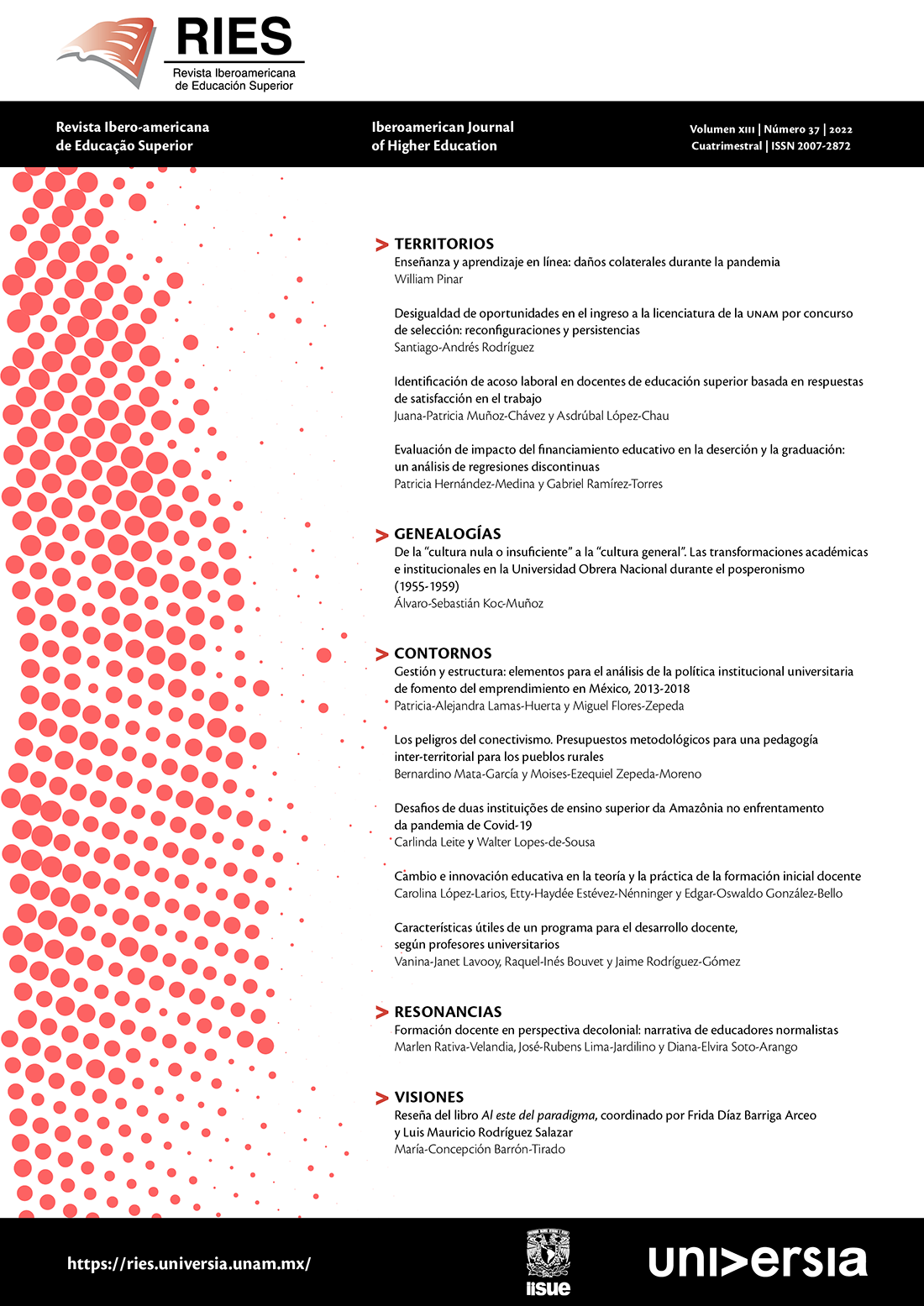Desigualdad de oportunidades en el ingreso a la licenciatura de la UNAM por concurso de selección: reconfiguraciones y persistencias
DOI:
https://doi.org/10.22201/iisue.20072872e.2022.37.1302Palabras clave:
UNAM, acceso a la educación superior, selección de estudiantes, oportunidades educativas, desigualdad social, MéxicoResumen
El objetivo del artículo es analizar los efectos de las características sociodemográficas, los antecedentes escolares y los orígenes sociales de los aspirantes sobre el ingreso a la licenciatura de la Universidad Nacional Autónoma de México (UNAM) por concurso de selección. El artículo se inscribe en la perspectiva sociológica de la estratificación social y la desigualdad de oportunidades. La información proviene de la Hoja de Datos Estadísticos de la UNAM y la estrategia de análisis descansa en un modelo de regresión logística. Los resultados muestran que el ingreso por concurso de selección continúa siendo inequitativo y resaltan la necesidad de pensar en mecanismos alternativos orientados a reducir la desigualdad.


